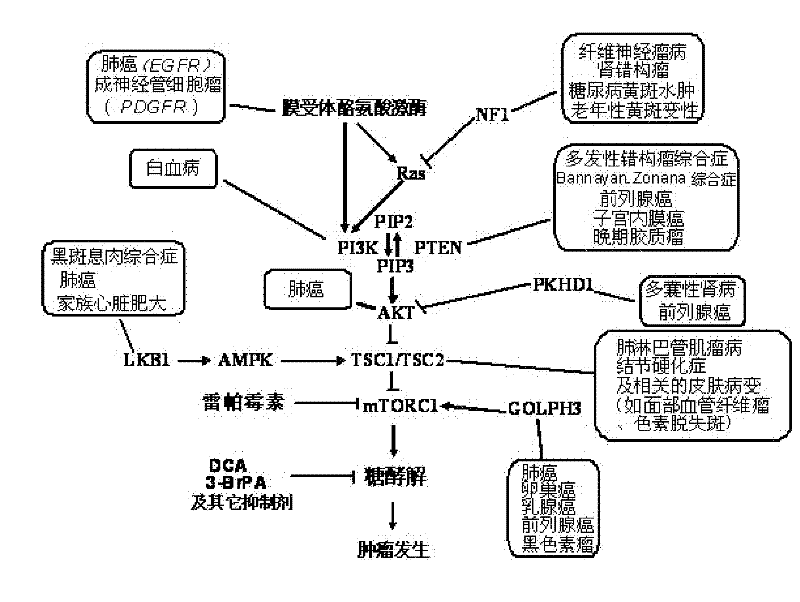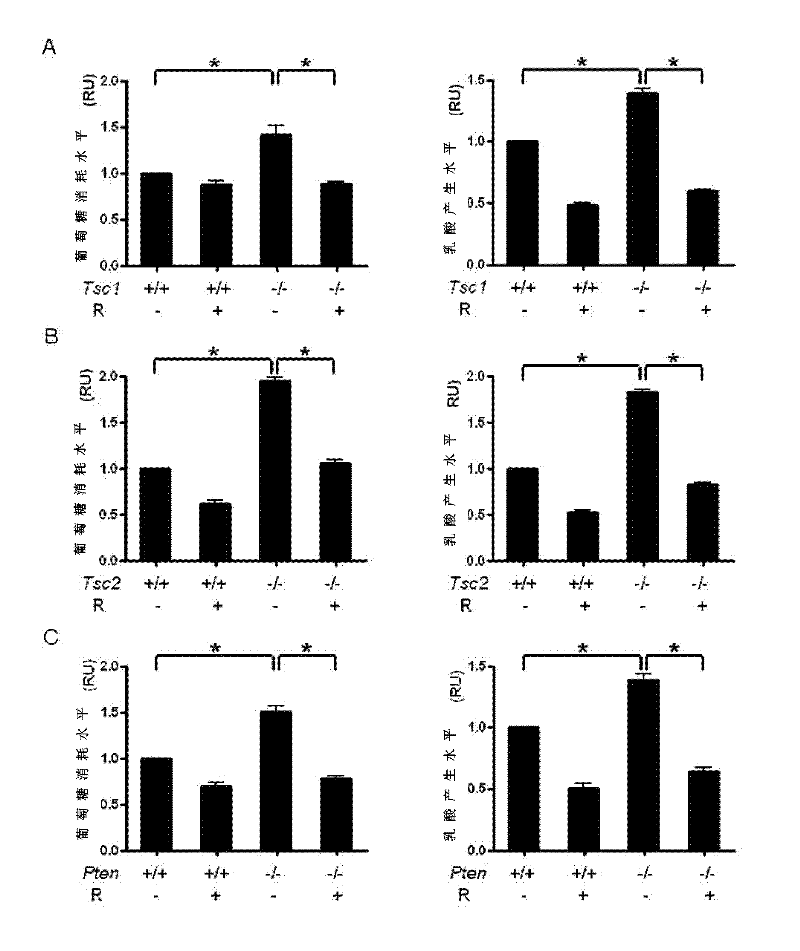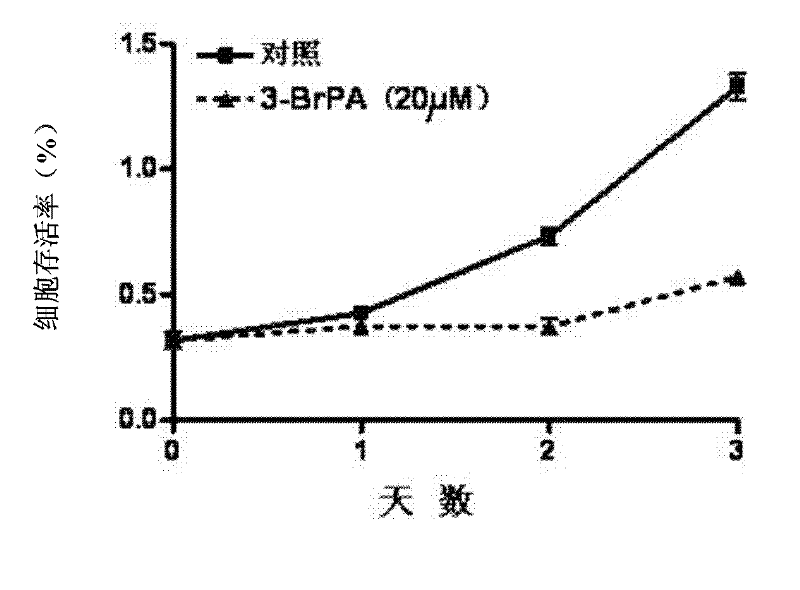New application of glycolytic inhibitor
An inhibitor and glycolysis technology, applied in the field of glycolysis inhibitors, can solve the problems of many adverse reactions and recurrence of rapamycin, and achieve the effects of less toxic and side effects and good curative effect
- Summary
- Abstract
- Description
- Claims
- Application Information
AI Technical Summary
Problems solved by technology
Method used
Image
Examples
Embodiment 1
[0028] Example 1 : Relationship between mTOR signaling pathway and glycolysis
[0029] In order to clarify the relationship between the mTOR signaling pathway and glycolysis, we first collected PTEN, TSC1, and TSC2 that were cultured normally and cultured with mTOR signaling pathway inhibitor rapamycin (Rapamycin, purchased from sigma, product number R0395). Gene knockout mouse embryonic fibroblasts (see, Kwiatkowski, D.J., et al., A mouse model of TSC1 reveals sex-dependent lethality from liver hemangiomas, and up-regulation of p70S6kinase activity in Tsc1null cells. Hum Mol Genet, 2002.11 (5): p.525-34; Zhang, H., et al., Loss of Tsc1 / Tsc2 activates mTOR and disrupts PI3K-Aktsignaling through downregulation of PDGFR. J Clin Invest, 2003.112(8): p.1223-33 .) (MEF, Pten- / -, Tsc1- / -, Tsc2- / -) and the supernatant of the corresponding wild-type cells (wt), then use the lactate analyzer (BIOSEN C line, Clinic) of EKF-diagnostic company Glucose and lactate levels in the cultur...
Embodiment 2
[0030] Example 2: Glycolysis Inhibitors Can Block the Proliferation of mTOR-Activated Cells
[0031] Since mTOR overactivation can lead to upregulation of glycolysis levels, we infer that the mechanism of mTOR activation tumorigenesis may be achieved by enhancing cellular glycolysis, so the application of glycolysis inhibitors may hinder the proliferation of mTOR activated cells. Will grow well 3-5 x 10 3 Tsc2- / -MEF cells were inoculated in four 96-well plates, and after the cells adhered to the wall, 20 μM 3-BrPA (3-bromopyruvate) was added to treat them for 24 hours, 48 hours and 72 hours, and the cell proliferation was detected by MTT method, 3 cells in each group Duplicate holes, with no drug group as the control, such as image 3 As shown, the growth of Tsc2- / -MEF cells supplemented with 3-BrPA was significantly inhibited compared with that of Tsc2- / -MEF cells without 3-BrPA. In addition, we will 3×10 3 ~5×10 3 Wt and Tsc2- / -MEF cells (Tsc2 gene knockout mouse emb...
Embodiment 3
[0032] Example 3: Glycolysis inhibitors can be used in the treatment of tumors caused by mTOR overactivation
[0033] In order to further study that glycolysis inhibitors can be used in the treatment of tumors caused by overactivation of mTOR, we used a nude mouse model of tumor formation for in vivo experiments of drug treatment. First, the PTEN-deficient human prostate cancer cell line PC3 cells (purchased from ATCC) were injected with 1×10 6 Inoculate subcutaneously in nude mice aged 4-6 weeks, when the tumor volume is 60-100mm 3 The nude mice were divided into four groups, and 3-BrPA (6mg / kg) and Rapamycin (0.02mg / kg) were used for monotherapy and combination therapy respectively, twice a week. The result is as Image 6 As shown, the combined application of small doses of the two drugs can significantly inhibit the growth of tumors, and also produce a synergistic effect in vivo. It provides a theoretical basis for the combination of glycolysis inhibitors and rapamycin...
PUM
 Login to View More
Login to View More Abstract
Description
Claims
Application Information
 Login to View More
Login to View More - R&D
- Intellectual Property
- Life Sciences
- Materials
- Tech Scout
- Unparalleled Data Quality
- Higher Quality Content
- 60% Fewer Hallucinations
Browse by: Latest US Patents, China's latest patents, Technical Efficacy Thesaurus, Application Domain, Technology Topic, Popular Technical Reports.
© 2025 PatSnap. All rights reserved.Legal|Privacy policy|Modern Slavery Act Transparency Statement|Sitemap|About US| Contact US: help@patsnap.com



